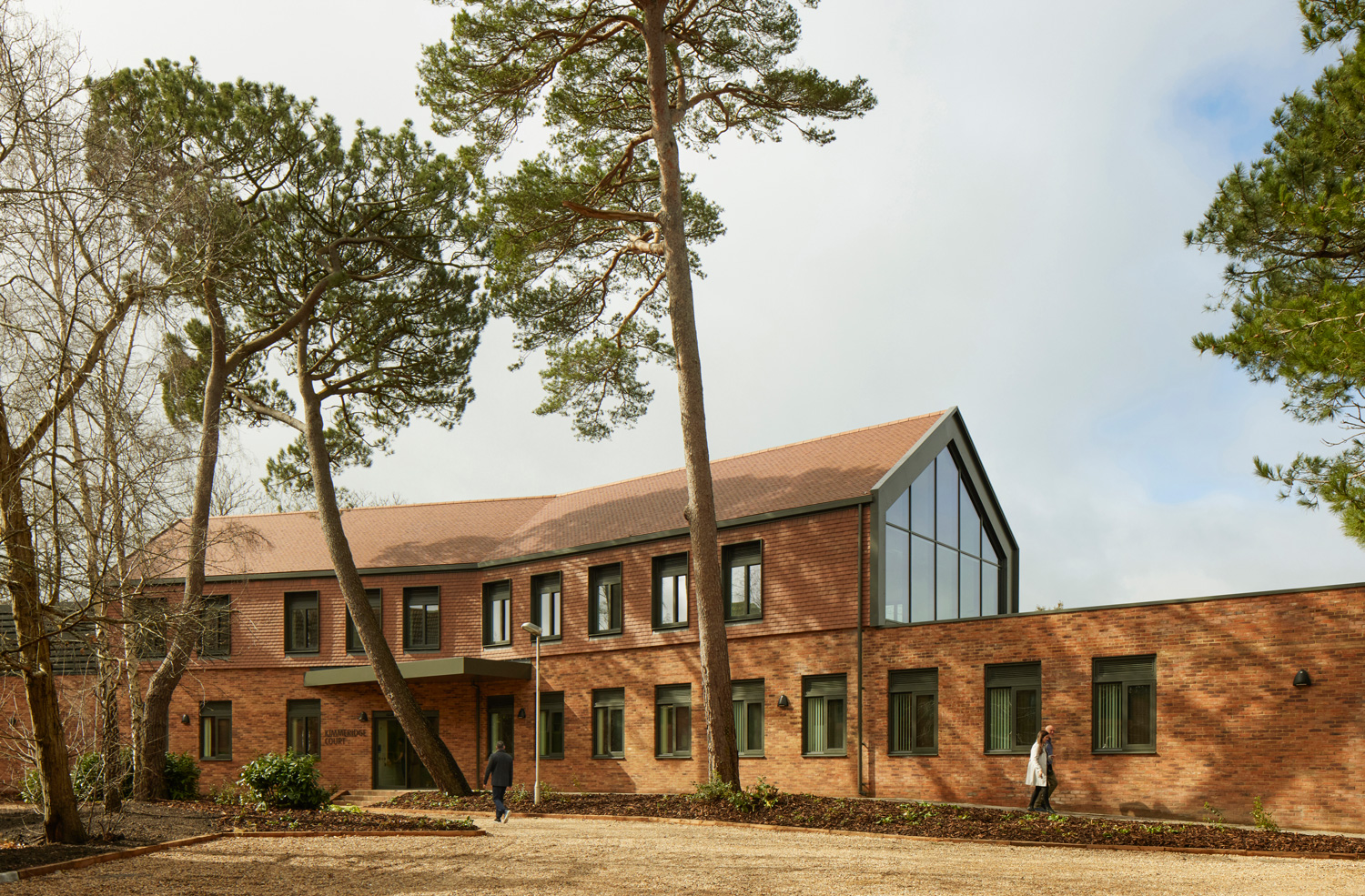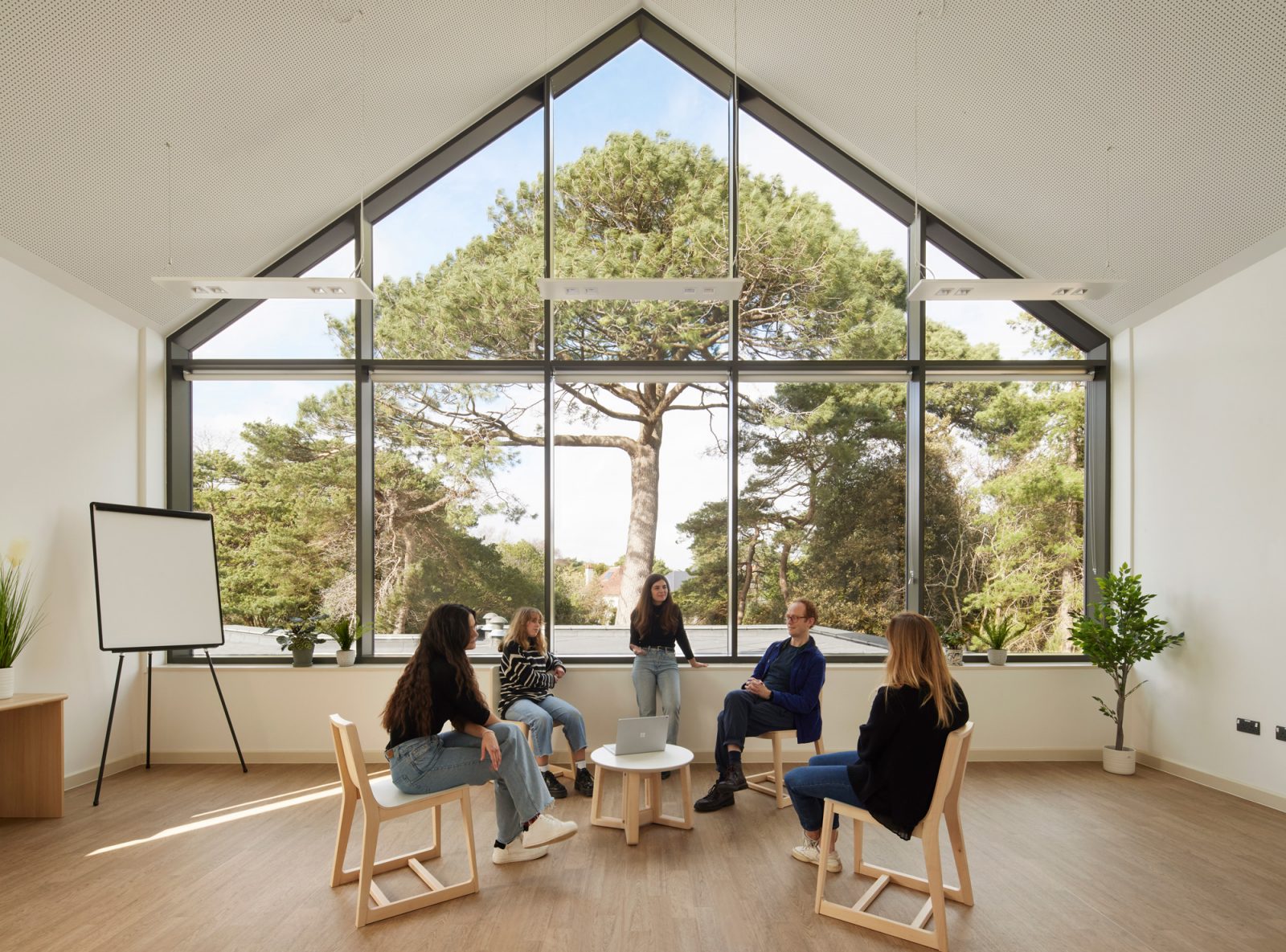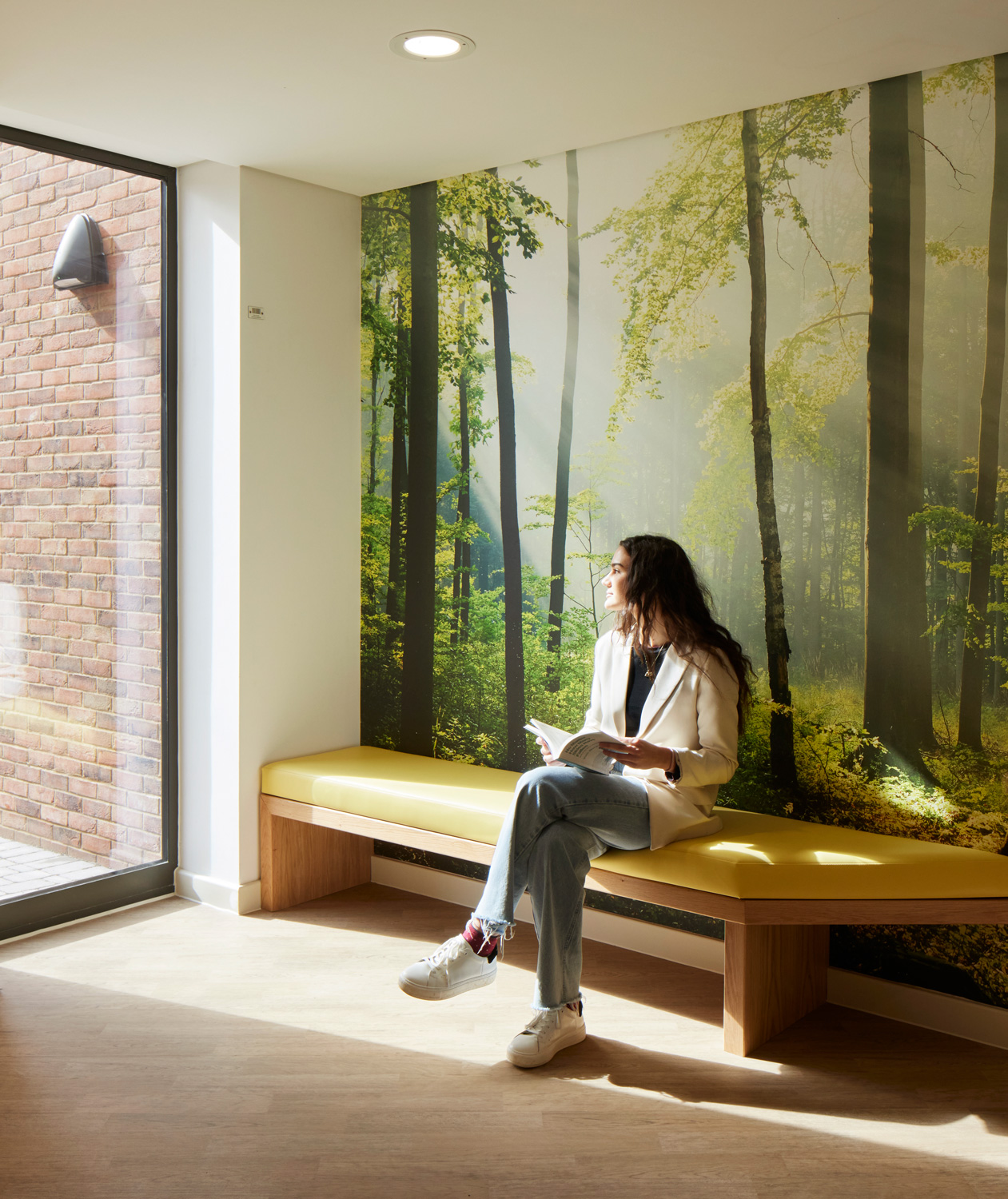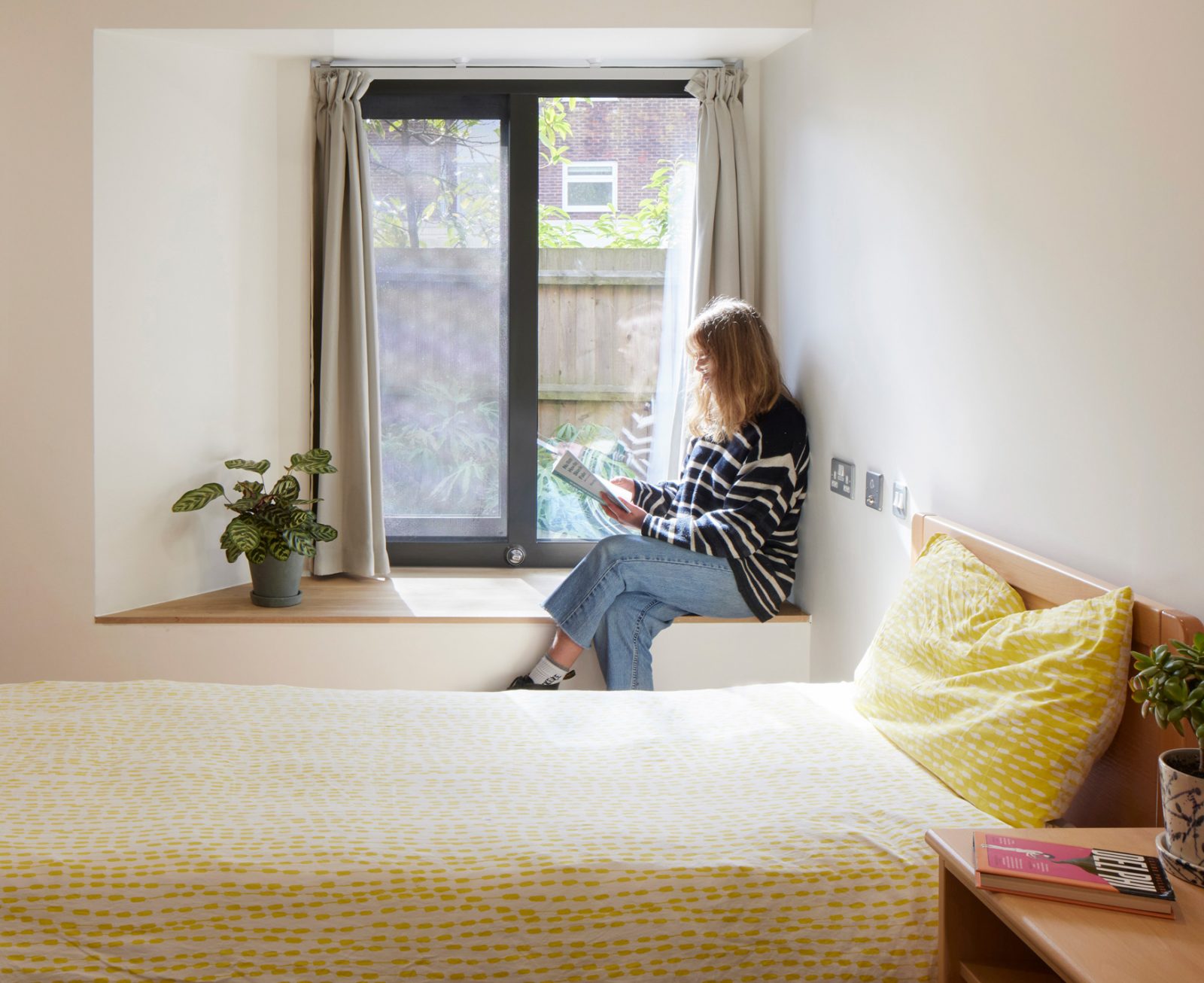Kimmeridge Court specialist eating disorders unit completes
Kimmeridge Court has been carefully crafted to preserve the quality of its natural setting and create a uniquely private and therapeutic environment for the treatment of patients with eating disorders.

Designed by Medical Architecture and built by Kier for Dorset HealthCare University NHS Foundation Trust, the £8m inpatient unit at St Ann’s Hospital in Poole, provides specialist accommodation to meet a growing demand for this service.

Meeting the need for specialist facilities
Eating disorders are responsible for more loss of life than any other mental health condition and are becoming increasingly common in the UK and worldwide. In England, hospital admissions for eating disorders reached over 24,000 in 2020-2021, a five-year increase of 84%.
Whilst nationally there is a shortfall in available beds for eating disorders, the completion of Kimmeridge Court will increase the Trust’s capacity for specialist care from 6 to 10 beds, to meet demand in the local area ensuring patients can receive treatment closer to home and their support network; a factor that aids their recovery.

The building's multi-functional activity space with views out across the tree canopy.
We’ve been long awaiting a modern, fit for purpose building, and now we have it — it’s beautiful. I’ve looked at other units around the country and what we have created here makes me very proud.
Creating a special environment on a sensitive site
The building is sited in a protected wooded glade within the grounds of the Grade II* Listed, St Ann’s Hospital on the Dorset coast. The size and positioning of the building has been carefully crafted to have a low impact on the mature coastal trees that occupy the site and to respect the character of the surrounding area. The larger two-storey volume of the building is set back from the site boundary and adjoining road, reducing in scale to single storey as it approaches the street frontage. An irrigated root-protecting foundation design lifts the building above the roots of the large mature Category A trees, which enabled their retention remarkably close to the new building.
The design’s response to the site context plays a vital role in the creation of a comfortable and non-clinical environment which supports recovery and provides patients with a sense that they are valued and deserving of care. The bedroom accommodation and the transparent patient day spaces offer views out to an accessible garden and the surrounding woodland, maximising the therapeutic benefit. A large multi-functional activity space provides spectacular views out across the tree canopy.
As soon as I walked into the new building, I actually welled up. I was so emotional because it is so beautiful, and it’s going to help so many people in their treatment.

The building has been designed to take full advantage of the quality of its natural context.

Circulation spaces are designed as an additional room, providing informal places to sit, rest and chat with other patients and the clinical team.
Spaces that support the treatment of eating disorders
Through close consultation with clinical staff, the facilities at Kimmeridge Court have been designed to enable patients to re-establish a positive relationship with food and exercise.
An attractive and homely Activities of Daily Living (ADL) kitchen area allows patients to practice meal preparation and cooking in an environment that mirrors everyday life, providing the confidence to cook for themselves. Group therapy spaces are immediately accessible from the dining space to enable workshops to take place in which feelings about eating are shared and explored. Sliding doors allow these key shared spaces to be opened-up to promote social connection, or separated for more private, focused activity.
I think the environment will facilitate so many more therapeutic activities, like supported eating and all the things you need to increase your chances of recovery.

The building provides a wide variety of comfortable living spaces. Sliding doors allow spaces to be divided when privacy is required.

The transparency of the living spaces allows views to the garden and surrounding woodland.
Due to the restful nature of their treatment, patients are encouraged to spend time in their bedrooms. As a result, they have been designed to be a comfortable space for relaxation and reflection. Bay windows provide a place to sit and enjoy the trees of the wooded glade whilst allowing light deep into the room. The layout of the bedrooms, and the ward plan with a central staff base, allows observation to be maintained with efficient staffing levels, without patients feeling their privacy has been compromised.
Externally, the design uses traditional materials found on the hospital site, such as brick and clay roof tiles, but details them in a contemporary manner, providing a modern and attractive setting for the treatment and care of vulnerable patients.

A window seat in each bedroom provides a comfortable place to sit and view the surrounding woodland.
Working closely with the Trust we have designed a place where patients can recover in an environment conducive to recovery-focused and high-quality care. By integrating the building so closely with its natural setting we have been able to fully harness the therapeutic quality of this fantastic site.